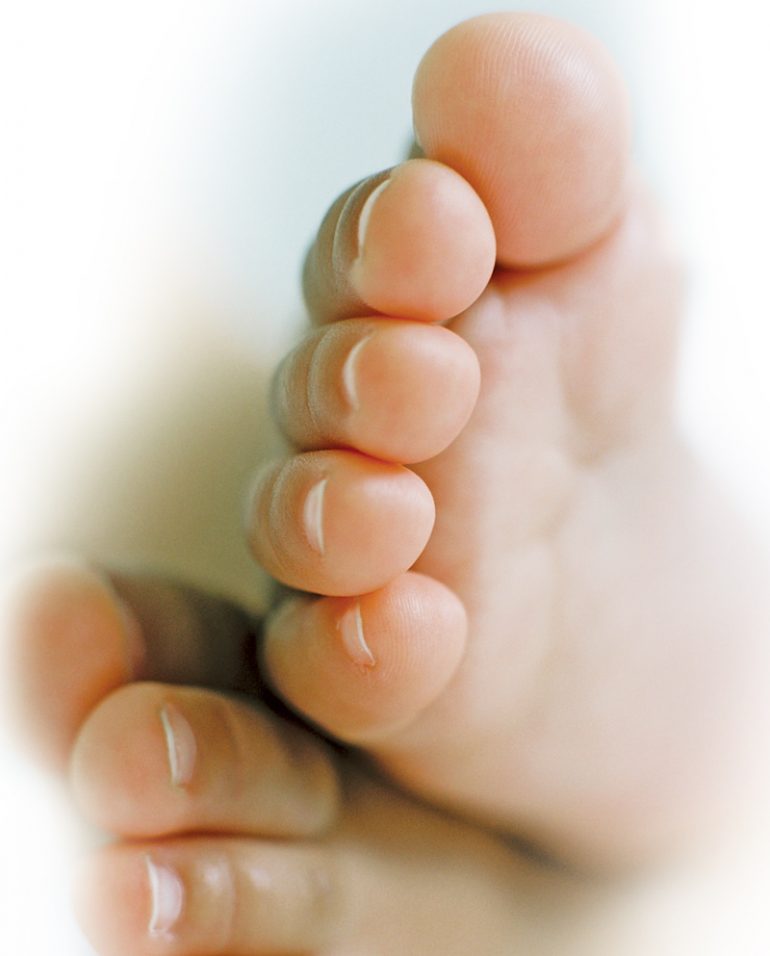By Joy Pape, RN, BSN, CDE, WOCN, CFNC
You may have heard that having diabetes increases your risk for foot problems, including amputations. The good news is that there is a lot you can do to keep this from happening to you. Learn and follow these diabetes foot care tips to help prevent problems with your feet.
➊ MANAGE YOUR DIABETES
Do all that you can to keep your blood glucose, blood pressure and cholesterol (lipids) in their target ranges. This is your first step—and one of the most important ones— toward protecting your feet.
➋ NEVER WALK BAREFOOT
Walking barefoot gives you no protection against stepping on something, dropping something on your foot or being stepped on. Wear water shoes at the beach and keep slippers near your bed so you can
get to them easily in the middle of
the night.
➌ PROTECT YOUR FEET FROM HOT OR COLD TEMPERATURES
Cold causes your blood vessels to constrict, which can decrease circulation. On the other hand, heating pads, hot water bottles, electric blankets or putting your feet on radiators, fireplaces or space heaters can cause burns if you are unable to sense the temperature. Use wool blankets or comforters to keep warm instead. Keep your feet warm with wool or cotton socks.
➍ WEAR SHOES THAT PROTECT YOUR FEET
High heels put pressure on the balls of your feet, which can cause blisters, open sores, calluses and bunions, among other problems. Also, sandals and flip-flops provide almost no protection for your feet.
➎ BE A FOOT DETECTIVE
Look at your bare feet every day. Look at the tops, bottoms and in between your toes for redness, bruises, blisters, cuts, swelling, a shift in the color or temperature of your skin and other changes. By looking at your feet daily, you will notice changes right away. Report any changes to your health-care provider immediately.
➏ IF YOU SMOKE,TRY TO STOP
Smoking causes your blood vessels to become narrow. Diabetes increases your risk for blood vessel disease. The two together can decrease the blood flow that carries oxygen to your legs and feet. A lack of oxygen makes it much harder for wounds to heal. Get help by asking your healthcare provider to refer you to a program that can help you stop smoking.
➐ KEEP YOUR FEET CLEAN AND DRY
You don't need to do more than take your usual shower. Do not soak your feet unless your healthcare provider directs you to do. Dry your feet well—especially between your toes. Use lotion if your skin is dry to keep it soft and protect against drying and cracking. Putting socks on immediately after you put on the lotion helps lock in the moisture.
➑ TRIM YOUR TOENAILS TO FOLLOW THE CURVE OF YOUR TOE
Use an emery board to file the edges. If you cannot reach your toes or your nails are thick, have your toenails cut by a podiatrist.
➒ SEE A PODIATRIST
Besides trimming your toenails, podiatrists provide the foot care and education you need. Don’t practice podiatry yourself, which means don’t use anything sharp on your feet, and don’t use any over-the-counter medicines on your feet, such as wart, corn or callus removers. See your podiatrist for those treatments.
Regularly seeing a podiatrist
decreases amputations by 30%.
➓ GET HELP RIGHT AWAY
If you have any changes in your feet, contact your healthcare provider immediately. Don’t put it off. Getting care early can mean getting and keeping your feet safe. Putting it off can lead to the problems you want to avoid.

